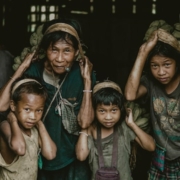CLC PRESS RELEASE: Congress narrowly avoids shutdown of programs targeting child labor
85 million children are currently in dangerous, dirty, and degrading jobs; $53 million saved in budget deal to ensure children are protected from exploitative labor
FOR IMMEDIATE RELEASE: December 17, 2015
MEDIA CONTACT: Reid Maki, Child Labor Coalition, (202) 207-2820, reidm@nclnet.org
Washington, DC—The Congressional budget package released today continues funding for programs to end child labor after the House and Senate voted to cut funding to the Department of Labor’s impactful and critical program in June 2015. The International Labor Affairs Bureau (ILAB) directs the U.S. Government’s efforts to end forced labor and child labor around the world. Advocates for protecting children from child labor are thankful for Congressional leadership.
“We are glad to see Congress putting actual funds to support their stated commitment to end the exploitation and abuse of children in the worst forms of child labor. The ILAB funding supports programs to help end and prevent the exploitation of children, said Melysa Sperber, Director the Alliance to Slavery and Trafficking (ATEST), “This bipartisan support is critical to keeping the U.S. as a global leader in ending the exploitation of men, women, and children in forced labor and exploitation.”
Currently 85 million children are in dangerous, dirty, and degrading jobs that prevent them from attending school, and are harmful to their physical, mental, and social development, known as hazardous child labor. Boys and girls work in many places including agriculture, mining, quarrying, fishing, factories, domestic work, and commercial sexual exploitation exposing them to harm. 5.5 million of these children are in forced labor.
“We are pleased that Congressional appropriators decided not to eliminate these highly effective child labor programs,” said Reid Maki, Director of Child Labor Advocacy for the National Consumers League and the coordinator of the Child Labor Coalition, representing 35 organizations. “Since 2000, nearly 80 million children have been removed from child labor. Child labor numbers have been reduced by one-third. The Department of Labor’s programs helped bring about these dramatic results and eliminating these programs would have meant turning back the clock to a time when the US government did little to help children escape the shackles of child slavery and the worst forms of child labor. Instead, we look forward to continuing progress in reducing these scourges.”





